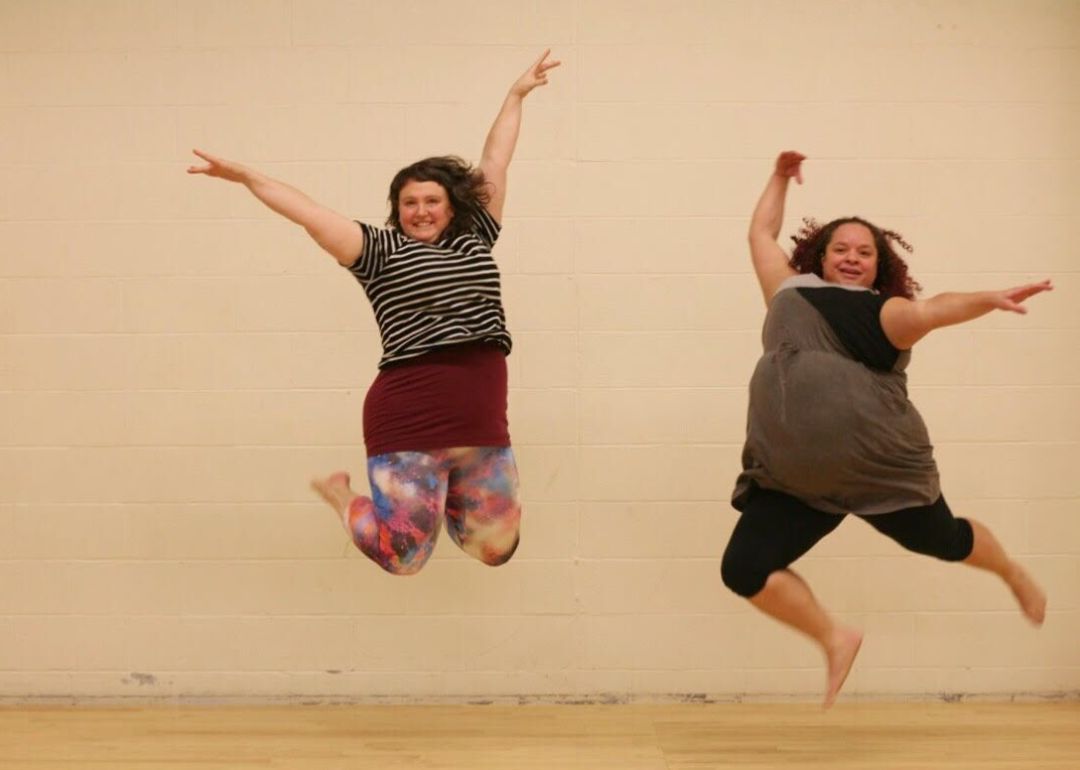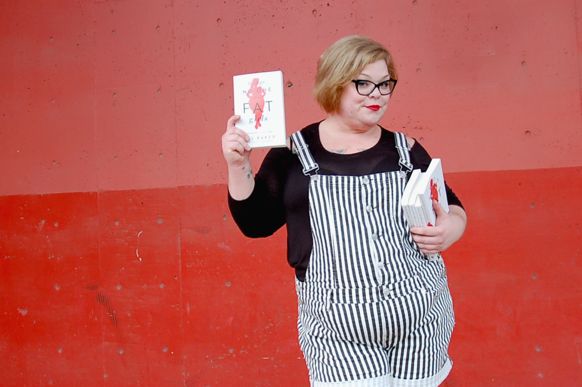This Fat-Centric Dance Class Provides a Safe Space to Move and Groove

KT Kusmaul (left) leaps with Heather Nichelle of Zaftig Dance.
Image: Sumr Valentine
As a child, KT Kusmaul studied classical ballet at a community dance center in the Midwest. But at age 12, she hit an infuriating roadblock.
“My artistic director said, ‘Your thighs are too big; I can’t have you onstage in a tutu’,” Kusmaul recalls. “Nobody was going to kick me out of the company, but I wasn’t going to get roles. They wouldn’t even know what to do with me.”
Faced with blatant discrimination, Kusmaul left the program. She continued studying other types of dance for several years, but by the time she finished college, she had more or less stopped dancing all together. Again, body shaming played a role in her decision.
“Every time I’d go try a class, I would feel so incredibly uncomfortable,” she says. “The culture of dance is full of judgment and body hate. So, most classes didn’t feel worth the battle and struggle of feeling safe.” Finally, in 2016, Kusmaul—now living in Portland—took matters into her own hands. She founded Body Home, a dance class that not only tolerates larger bodies, but celebrates them.
Held on Tuesday nights in Southeast Portland, classes incorporate jazz and contemporary technique, and are open to all abilities, genders, and experience levels. In fact, Kusmaul estimates that half of her students have never danced before. As for the other half, Kusmaul says, “A lot of them will say, ‘I danced until someone told me I wasn’t allowed to dance anymore.’ This is way to heal that wound; [dancing] in a safe space is something that most of us can’t imagine.”
Although classes are open to all bodies, Body Home is “by and for fat people—and people can self-define what that is,” Kusmaul clarifies. The organization is part of a flourishing fat-positive community in Portland; one that also includes Zaftig Dance, Fat Girls Hiking, Fat Fancy, and Knock Out. In fact, it was this September at Knock Out—an annual plus size fashion show and shopping event—that Body Home performed publicly for the first time. The reception was incredibly positive; according to Kusmaul, many attendees were moved to tears.
These days, Kusmaul continues to push the boundaries of the dance world. She’s begun thinking about choreography in entirely new ways—for example, while many body-positive folks might say they can dance despite their fatness, Kusmaul wants to explore the unique movements only available to larger bodies.
"When I take a big step, and my belly arrives a partial beat later, what about the syncopation that creates? What’s cool about that?” Kusmaul asks. “I have this extra body fat that creates ripples and has its own weight and gravity—what if I use that, instead of apologizing for it and tucking it away?”
Ready to join? Kusmaul plans to open registration for the next round of Body Home classes in early December, so keep an eye on the Body Home website and Facebook page for more information. And speaking of which… what does “Body Home” mean, anyway?
“It’s about coming home to our bodies,” says Kusmaul. “Honoring them, and caring for them, and being supported and at ease.”




